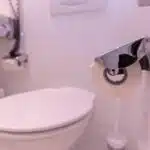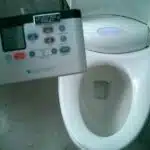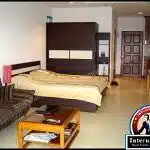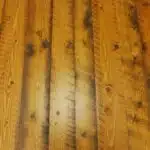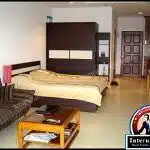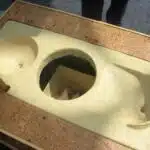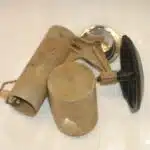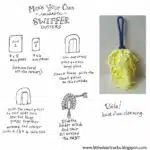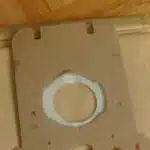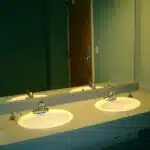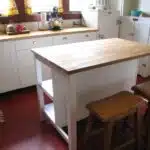Keeping a clean and organized living space is essential for maintaining a healthy and stress-free lifestyle. However, many individuals struggle with the daunting task of cleaning their apartments. For those who are not naturally inclined towards cleaning or simply do not have the time to dedicate hours to it, there are ways to make the process more manageable. In this article, we will outline five easy steps that will help you clean your apartment efficiently and effectively.
Firstly, it is important to establish a routine for cleaning your apartment. By setting aside specific days of the week or times of day for cleaning tasks, you can avoid feeling overwhelmed by the mess and clutter that accumulates over time. Additionally, having a routine helps ensure that all areas of your apartment are cleaned regularly, preventing any buildup of dirt or grime. Secondly, it is crucial to prioritize the most crucial areas when cleaning your apartment. These include high-traffic areas such as floors, countertops, and bathrooms. By focusing on these areas first, you can create a cleaner environment that promotes health and wellbeing. In the following sections, we will explore each step in detail and provide expert tips on how to achieve a sparkling clean apartment in no time!
Establishing A Cleaning Routine
Picture this: a pristine and organized living space that feels like a breath of fresh air. Sounds great, right? But getting there takes effort and dedication. The first step towards achieving this goal is to establish a cleaning routine and stick to the schedule.
Establishing a Cleaning Routine is essential for keeping your apartment clean and tidy. It involves creating regular cleaning habits, such as wiping down counters after each use, sweeping the floors daily, and doing laundry weekly. By setting aside specific times for these tasks, you can create a consistent routine that becomes part of your daily life.
Sticking to the Schedule is equally important when establishing a cleaning routine. It’s easy to let things slide when life gets busy, but sticking to your schedule will ensure that you maintain a clean living space. Consider using reminders or alarms on your phone or calendar app to help you stay on track with your cleaning tasks. With time, it’ll become second nature, and you’ll enjoy the benefits of living in an organized and healthy environment.
Transitioning into the next section about making a cleaning checklist: Now that you understand the importance of establishing a cleaning routine and sticking to the schedule let’s take it one step further by creating a cleaning checklist tailored to your needs and preferences.
Making A Cleaning Checklist
Establishing a Cleaning Routine is the first step towards maintaining a clean apartment. Once you have identified your cleaning goals and set up a routine, the next step is creating a cleaning schedule. A cleaning schedule will help ensure that all areas of your apartment are cleaned regularly, reducing the likelihood of clutter and dirt buildup.
When creating your cleaning schedule, it is important to prioritize cleaning tasks. Start with high-traffic areas, such as the living room and kitchen, which require daily or weekly attention. Next, move on to less frequently used spaces like bedrooms and bathrooms, which may only require bi-weekly or monthly cleaning.
By prioritizing cleaning tasks, you can create an efficient schedule that fits into your daily routine without feeling overwhelming. With consistent effort, you can maintain a clean and organized apartment that promotes positive mental health and productivity.
Moving forward into our next section about gathering your cleaning supplies, it’s important to note that having the right equipment on hand can make all the difference in how easily and effectively you’re able to clean your apartment.
Gathering Your Cleaning Supplies
Imagery: Imagine yourself standing in the middle of your apartment, surrounded by all the clutter and dirt that has accumulated over time. You know that it is time for a deep clean, but before you begin, you need to gather your cleaning supplies.
First and foremost, consider using eco-friendly cleaning alternatives that are not only better for the environment but also safer for your health. For instance, instead of using harsh chemicals to clean your kitchen countertops, try making a solution of vinegar and water. Not only is it effective at removing grease and grime, but it is also safe to use around food.
Secondly, when selecting cleaning products, choose ones that are suitable for the type of surface you will be cleaning. For example, if you have hardwood floors in your apartment, avoid using abrasive cleaners that could damage the finish. Instead, opt for a product specifically designed for wood surfaces.
Lastly, make sure to stock up on all the necessary tools such as microfiber cloths, sponges, and mops. These items will come in handy when tackling different types of messes around your apartment.
When you have gathered all the essential supplies needed to clean your apartment effectively and efficiently, it’s time to declutter before starting any actual cleaning. By decluttering first, you can ensure that there is more space available to move around while cleaning and fewer items blocking areas that need attention.
Decluttering Your Apartment
To truly clean your apartment, it’s essential to declutter first. This is especially true if you have a lot of items lying around that you don’t use or need. Decluttering involves going through everything in your apartment and deciding what to keep, donate, or discard.
One great way to maximize storage is by investing in furniture that doubles as storage space. For example, a bed frame with built-in drawers can provide ample storage for clothing and linens. Additionally, consider using under-bed storage containers or shelves that hang over doors to free up more space.
When it comes to decorating your apartment, less is often more. Embrace minimalist decor by choosing a few statement pieces rather than cluttering up your space with lots of small knickknacks. Not only will this make cleaning easier, but it will also create a more peaceful and relaxing environment in which to live.
Moving on from decluttering, the next step in cleaning your apartment is dusting surfaces and furniture.
Dusting Surfaces And Furniture
Dusting surfaces and furniture is an essential part of maintaining a clean and healthy apartment. However, it can be a tedious task, especially if you do not have the right tools or techniques to get the job done efficiently. Therefore, it is crucial to choose the right tools for dusting to avoid scratching or damaging your furniture.
When choosing the right tools for dusting surfaces and furniture, microfiber cloths are highly recommended. These cloths are gentle on surfaces and effectively trap dust particles without spreading them around. Additionally, you can use a soft-bristled brush or a vacuum cleaner with a soft-brush attachment to dust hard-to-reach areas such as corners, crevices, and upholstery.
Preventing dust buildup is also crucial when cleaning your apartment. One way to prevent dust from accumulating on surfaces is by using natural cleaning solutions such as vinegar or lemon juice instead of harsh chemicals that can leave residues behind. You should also consider decluttering your living space regularly to reduce the number of items that collect dust.
Now that you know how to choose the right tools and techniques for dusting surfaces and furniture let’s move on to vacuuming or sweeping floors. The floor is one of the most frequently used areas in an apartment; therefore, it requires regular cleaning to keep it hygienic and prevent allergens from accumulating.
Vacuuming Or Sweeping Floors
As a cleaning expert, I recommend vacuuming or sweeping your floors as a crucial step in maintaining a clean and healthy living space. When it comes to floor types, there are benefits to both hardwood and carpeted floors. While hardwood is easier to clean and maintain, carpeted floors can trap dust and allergens that would otherwise circulate in the air. Regardless of your flooring choice, regularly vacuuming or sweeping will help keep dirt and debris from accumulating.
When it comes to choosing the right vacuum for your apartment, there are a few factors to consider. Firstly, the size of your apartment should determine the size of the vacuum you purchase. If you live in a small studio apartment, a handheld or stick vacuum may suffice. However, if you have multiple rooms with carpeted floors, an upright vacuum may be more suitable. Additionally, consider purchasing a vacuum with HEPA filters to ensure that allergens and other small particles are effectively trapped.
Regularly vacuuming or sweeping your apartment’s floors not only helps keep them looking tidy but also has health benefits. Dust and debris can accumulate quickly on floors and lead to respiratory issues if left unchecked for too long. By incorporating this simple task into your cleaning routine, you’re not only serving yourself but also creating a healthier environment for those around you. In the next section, we’ll cover how to mop hard floors effectively without damaging them.
Mopping Hard Floors
After vacuuming or sweeping your floors, it’s time to move on to mopping hard surfaces. Mopping is an essential part of keeping your apartment clean and free from dirt and grime that has accumulated over time. It not only removes dirt but also helps maintain the shine and luster of your floor.
Choosing the right mop is crucial for effective cleaning. There are different types of mops available on the market, such as traditional string mops, sponge mops, and steam mops. Depending on your flooring type, you should choose the right mop that can effectively remove dirt without damaging your floors. For instance, if you have hardwood floors, it’s best to avoid string mops as they can scratch the surface.
Time-saving mopping techniques can help make this task much easier and quicker. First, start by filling a bucket with hot water and adding a cleaning solution that is appropriate for your floor type. Dip the mop into the solution, wring out excess water, and start cleaning in small sections working towards the door. Rinse your mop frequently in clean water to remove any dirt or debris that may have accumulated on it.
Now that you’ve learned how to properly mop your hard surfaces let’s move on to cleaning kitchen appliances and surfaces. Maintaining a clean kitchen is essential as it’s where we prepare our food. Dirty appliances and surfaces can lead to cross-contamination of bacteria and other pathogens that could cause illness or contamination of food products.
Cleaning Kitchen Appliances And Surfaces
As you begin to tackle the kitchen, your focus should be on cleaning kitchen appliances and surfaces. The kitchen is one of the most used spaces in any apartment and requires special attention to maintain cleanliness. When it comes to cleaning kitchen appliances, there are a few things to consider.
Firstly, start by unplugging all appliances before cleaning them. This will prevent any electrical accidents from occurring during the cleaning process. Secondly, use a damp cloth or sponge with a mild detergent to wipe down all surfaces and remove any stains or food residue. For tough stains, try using vinegar as it is an effective natural cleaner that won’t damage your appliances.
When it comes to cleaning kitchen surfaces, different materials require different cleaning techniques. For example, stainless steel surfaces can be cleaned with a mixture of warm water and dish soap followed by a rinse with clean water, while granite countertops require more specialized care such as avoiding acidic cleaners that can etch the surface. Stain removal techniques also vary depending on the surface material; for instance, baking soda paste can be used to remove stubborn stains on ceramic cooktops.
Next up is scrubbing bathrooms and toilets where cleanliness must be prioritized in order to maintain hygiene and prevent illness from spreading.
Scrubbing Bathrooms And Toilets
- To effectively scrub a tub, it is important to first remove any debris or dirt on the surface, then apply a bathroom cleaner and let it sit for several minutes, before scrubbing with a sponge or brush.
- To clean a toilet, it is best to begin by using a toilet brush to scrub the bowl and rim, then use an antibacterial cleaner to disinfect the entire toilet and flush.
- After scrubbing, thoroughly rinse the tub with water, and use a squeegee to remove any excess moisture.
- When finished cleaning the toilet, use a disinfectant wipe to wipe down the toilet seat and handle.
Scrubbing Tubs
As a professional cleaning expert, one of the most important tasks when cleaning bathrooms is scrubbing the tubs. Picture this: you’re standing in a bathroom and notice that the tub has soap scum, grime, and dirt buildup. A bathroom with a clean tub not only looks visually appealing but also ensures hygiene and prevents mold growth. To achieve this, here are five easy steps to follow:
Firstly, remove any items such as shampoo bottles or razors from the tub area. Next, pour DIY cleaning products onto the surface of the bathtub. Use a sponge or brush to spread the cleaner evenly across all surfaces of the tub. Avoid using abrasive cleaners as they may damage your tub’s surface.
Secondly, let the cleaner sit for at least 15-20 minutes before scrubbing. This allows time for the solution to penetrate through grime and stains on your bathtub’s surface effectively.
Lastly, use elbow grease to scrub away any dirt and stains from your bathtub’s surface thoroughly. Rinse off all remaining soap residue carefully by running water over it. Ensure that there is no excess water left on your bathtub’s surface after wiping it dry with a towel.
By following these simple steps regularly, you can maintain a clean and hygienic bathroom while preventing mold growth in your bathtub area effortlessly. Remember that proper maintenance is crucial to prevent unwanted buildup of dirt and grime in your bathroom’s corners and crevices.
Cleaning Toilets
Now that we’ve covered scrubbing bathtubs, let’s move on to cleaning toilets. As a professional cleaning expert, I know that scrubbing toilets is an essential part of maintaining a clean and hygienic bathroom. A dirty toilet not only looks unsightly but also poses health risks to those who use it. To achieve a sparkling clean toilet, follow these easy steps.
Firstly, choose the right toilet bowl cleaners. There are various options available in the market, including eco-friendly ones. These products work by breaking down stains and killing bacteria in your toilet bowl without causing any harm to the environment or your health.
Secondly, apply the cleaner inside the bowl and under the rim. Use a brush to scrub away any stains or grime inside the bowl thoroughly. Be sure to clean around the base of the toilet as well.
Lastly, flush the toilet several times until all residue has been washed away. Wipe down any remaining water with a towel or paper towel from surfaces surrounding the toilet area. By following these simple steps regularly, you can ensure that your bathroom stays hygienic and healthy for everyone who uses it.
Remember that keeping your bathroom clean is not just about aesthetics but also about maintaining good health standards. With these tips on scrubbing bathrooms and toilets, you can maintain a spotless and healthy bathroom effortlessly while serving yourself and others better in your household or workplace!
Washing Linens And Towels
After scrubbing your bathrooms and toilets, it is important to move onto washing your linens and towels. These items are frequently used and can accumulate bacteria and germs over time if not properly cleaned. In this section, we will discuss how to properly wash your linens and towels as well as some tips for extending their lifespan.
To start, it is recommended that you separate your linens and towels by color. Whites should be washed separately from colored fabrics to prevent bleeding of color onto lighter items. Additionally, it is important to check the care label on each item before washing to ensure that you are using the correct temperature setting on your washing machine.
When washing your linens and towels, it is best to use a mild detergent with no fabric softener added. Fabric softener can leave a residue on the fibers which can reduce their absorbency over time. It is also recommended that you avoid using bleach unless absolutely necessary as it can break down the fibers in the fabric.
Tips for extending the life of your linens and towels include avoiding overloading your washing machine, drying them at a low heat setting or air-drying them outside in direct sunlight, and storing them in a cool, dry place. By following these tips, you can ensure that your linens and towels remain fresh and clean for longer periods of time.
Transition: Now that you have learned how to properly wash your linens and towels, let’s move onto disinfecting high-touch surfaces throughout your apartment.
Disinfecting High-Touch Surfaces
One study by the National Science Foundation found that household surfaces, particularly those in the kitchen, are often contaminated with harmful bacteria such as E.coli and Salmonella. This is concerning given that these bacteria can cause serious illnesses such as food poisoning. As a result, it is crucial to disinfect high-touch surfaces in your apartment regularly.
When it comes to disinfecting high-touch surfaces, it’s important to prioritize areas that are frequently used such as door handles, light switches, and kitchen countertops. The best disinfectants for these surfaces are those containing at least 70% alcohol or hydrogen peroxide. It’s important to follow the manufacturer’s instructions for proper use and wear gloves when handling these products.
In addition to disinfecting high-touch surfaces, it’s also important to clean them regularly using soap and water before applying a disinfectant. By doing so, you can remove any dirt or grime that may be present on the surface which can reduce the effectiveness of a disinfectant. Taking these steps will help ensure that your apartment is free from harmful bacteria and viruses.
To maintain a clean and healthy living environment, organizing your living space should be done on a regular basis. When items are organized and put away properly, it helps reduce clutter which ultimately leads to less dust accumulation in your home. In the next section, we will discuss some simple tips on how to organize your apartment effectively without breaking the bank.
Organizing Your Living Space
Now that you have thoroughly disinfected your high-touch surfaces, it’s time to move on to organizing your living space. A clean and organized apartment not only looks aesthetically pleasing but also promotes a healthy and stress-free environment. Minimalist design and Feng Shui arrangements are two popular methods for achieving this.
Minimalist design is all about simplifying your living space by eliminating unnecessary clutter. Start by decluttering each room, getting rid of anything that no longer serves a purpose or brings joy. This can include old clothes, unused furniture, and outdated decorations. Once you have minimized the clutter, focus on creating a functional layout for each room. Keep furniture to a minimum and arrange it in a way that maximizes open space.
Feng Shui is an ancient Chinese practice that focuses on arranging objects in a way that promotes positive energy flow throughout the home. Some easy ways to incorporate Feng Shui into your apartment include using natural light sources, adding plants for fresh air and greenery, and keeping things symmetrical. By following these principles, you can create a harmonious living space that promotes relaxation and productivity. With these tips in mind, you can transform your apartment into a clean, organized oasis of calm – perfect for unwinding after a long day at work.
As important as it is to clean and organize your apartment once, it’s equally important to maintain the cleanliness over time. To keep your apartment looking its best, make sure to stick with the minimalist design and Feng Shui arrangements you’ve created. Regularly decluttering will help prevent the build-up of unnecessary items while maintaining an open layout in each room will ensure good energy flow throughout the space. Additionally, make sure to regularly clean high-touch surfaces such as doorknobs, light switches, and countertops to prevent the spread of germs. By following these simple steps for maintaining your clean apartment, you’ll be able to enjoy a healthy and stress-free living space for years to come.
Maintaining Your Clean Apartment
Now that your apartment is clean, it’s important to maintain its tidiness. Quick cleaning sessions are the key to keeping a clean apartment. Spend just a few minutes each day wiping down surfaces, sweeping floors, and putting things away. These small tasks add up and prevent clutter from piling up.
It can be challenging to maintain motivation when it comes to cleaning, especially if you live alone. One way to stay motivated is by making a schedule for yourself. Determine which days of the week you’ll do certain tasks, such as vacuuming or dusting. This will help ensure that everything gets done regularly and prevents tasks from becoming overwhelming.
Remember that maintaining a clean apartment is not just about keeping up appearances; it’s also about creating a comfortable living environment for yourself. When your surroundings are clean and organized, you’ll feel more relaxed and focused. So take pride in your space and keep it tidy with quick cleaning sessions and a consistent schedule.
As busy schedules can make it difficult to find time for deep cleaning, the next section will provide tips on how to effectively clean your apartment in a time crunch without sacrificing quality or results.
Tips For Cleaning In A Time Crunch
When you’re in a time crunch but still need to clean your apartment, it can be tempting to skip important steps or rush through the process. However, there are several cleaning shortcuts and quick cleaning hacks that can help you get the job done efficiently without sacrificing cleanliness.
One of the best ways to save time while cleaning is by using multi-purpose cleaning products. Instead of using separate cleaners for different surfaces, look for all-in-one options that can tackle everything from countertops to floors. Additionally, try to focus on high-traffic areas like your kitchen and bathroom, where dirt and grime tend to accumulate more quickly. By giving these areas a quick once-over every day or two, you can keep your entire apartment feeling fresh and tidy.
Another helpful tip is to break down larger cleaning tasks into smaller ones that can be completed more easily over time. For example, instead of deep-cleaning your entire bathroom in one go, spend a few minutes each day wiping down surfaces and tackling small tasks like scrubbing the toilet bowl or washing the shower curtain liner. Over time, these small efforts will add up and make a big difference in the overall cleanliness of your apartment.
By following these quick cleaning hacks and taking advantage of multi-purpose products and daily maintenance tasks, you can keep your apartment looking its best even when you’re short on time. Plus, maintaining a clean living space has numerous benefits for your health and wellbeing – which we’ll explore further in the next section.
Benefits Of A Clean Apartment For Your Health And Wellbeing
Transition from Previous Section:
When it comes to cleaning, time is often of the essence. However, even when you don’t have a lot of time, it’s important to maintain cleanliness in your living space. In this next section, we’ll discuss the importance of keeping your apartment clean and clutter-free for your health and wellbeing.
Subsequent Section: Benefits of a Clean Apartment for Your Health and Wellbeing
A clean home is not just aesthetically pleasing; it also has significant health benefits. When you keep your living space clean, you reduce the number of allergens and bacteria that can cause allergies and illnesses. Dust and pet dander can accumulate quickly, leading to respiratory problems such as asthma or allergies. By staying on top of cleaning tasks like dusting, vacuuming, and wiping down surfaces regularly, you can help prevent these issues.
In addition to physical health benefits, a clean apartment can also improve your mental health. A messy or cluttered living space can create feelings of stress and anxiety. It’s difficult to relax in a space that feels chaotic or disorganized. On the other hand, a tidy living area creates a sense of calmness and orderliness that can be beneficial for reducing stress levels.
Maintaining a clutter-free living space is an important part of keeping your home clean. Clutter not only makes it harder to clean but also contributes to feelings of overwhelm and disorganization. By decluttering regularly, you free up physical space in your home as well as mental space in your mind. This allows you to focus on what’s truly important in life rather than being weighed down by possessions.
In summary, cleanliness is crucial for maintaining good physical health as well as mental wellbeing. Cleaning tasks such as dusting, vacuuming, wiping down surfaces regularly can help reduce allergens and bacteria while creating a sense of calmness in your living space. Additionally, decluttering regularly frees up both physical and mental space, allowing you to focus on the things that truly matter in life.
Conclusion
As a professional cleaning expert, it is imperative to establish a cleaning routine and maintain a clean living space. By making a cleaning checklist and gathering necessary supplies, you can tackle each task with ease and efficiency. Decluttering your apartment before dusting surfaces and furniture will make the process smoother. Organizing your living space will also help maintain cleanliness.
It is important to remember that maintaining a clean apartment goes beyond just appearance. A clean living space has many benefits for your health and wellbeing. It reduces stress levels, improves air quality, and helps prevent illness. In times of time crunch, prioritize tasks and focus on high traffic areas such as the kitchen and bathroom.
In conclusion, by following these five easy steps, you can achieve a clean apartment in no time at all while reaping the benefits of improved health and wellbeing. Remember to establish a routine, make a checklist, declutter before dusting, organize your living space, and maintain cleanliness regularly. With these tips from a professional cleaning expert, you’ll be able to enjoy a clean and comfortable living space with minimal effort!
Image Credits
- “Pink apartments” by gyoung (featured)



